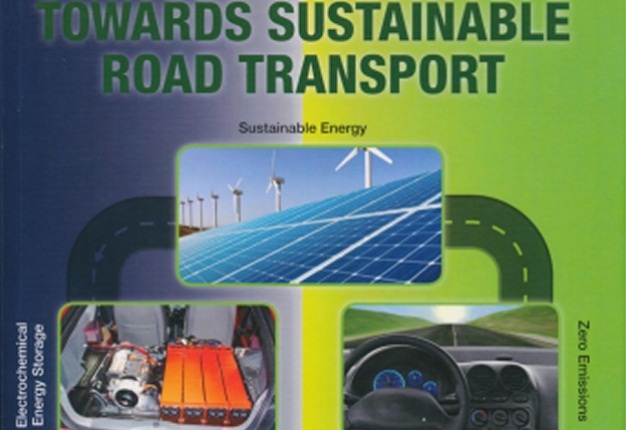
If you’re still around by 2050 you’ll probably be electrically propelled during your work and leisure driving with a battery as the ‘fuel tank’ and a hydrogen fuel-cell to generate the electricity to fill it.
That’s if exhaust emissions targets are to be met, according to an expert team responsible for writing ‘Towards Sustainable Road Transport’, published by Elsevier.
The book’s three authors are senior research chemists who have spent their professional careers working with energy and electrochemistry.
PROTECTING FUTURE LIFE
More than 300 pages packed with information describe the growth and technical development of road vehicles during the 20th century and the state-of-the-art power sources and advanced vehicle designs now needed to meet the 80% reduction required in global vehicle exhaust emissions over the next 35 years to protect future generations of life on Earth.
Patrick Moseley, president emeritus of the Advanced Lead-Acid Battery Consortium (ALABC) says: “Over the past 25 years the auto industry has reduced its greenhouse-gas emissions by 20% from a 1990 baseline, which is less than one percent a year. Over the next 35 years the industry will have to sustain the two to three percent annual reduction that it is now achieving.
“That’s a tall order.”
Moseley’s co-authors are Ronald Dell, former head of applied electrochemistry at the UK Atomic Energy Authority, and David Rand, a former chief research scientist of the Commonwealth Scientific and Industrial Research Organisation (CSIRO) of Australia.
This their first book focuses on road transport, a key aspect of human activity in many sectors – among them agriculture, industry and power – that require attention if sustainable development on a global scale is to be achieved.
Dell said: “Our work examines the prospects for an evolution of the global transport system - which currently consumes irreplaceable resources and degrades the environment - towards one that will be both supportable and benign.
“This is a considerable challenge. The global fleet of motor vehicles of all types, including two-wheelers, is now around 1.5-billion, of which a billion are cars.
This is expected to reach two billion soon after 2020, with a rapid increase in the number of internal combustion engine vehicles (ICEVs) anticipated in China and India, which is an understandable increase given the aspirations of these two enormous populations.
INCREASE IN COST
Rand had this to say: “Automotive manufacturers face the conflicting demands of customers for vehicles with ever-improved performance, safety and comfort – but without any appreciable increase in cost.
“The trend is towards smaller internal combustion engines augmented by intelligent electrification with no decrease in power; this combination being especially effective in reducing both emissions and fuel consumption.”
All three authors have been heavily involved throughout their careers in electro-chemistry and the development of battery designs and power sources. So, not surprisingly, they express their views on numerous advanced battery chemistries and super capacitors being considered for use in road vehicles.
The book’s co-authors confirm that even though the search for more-advanced battery chemistry continues, there appears to be little prospect in the short term of finding a battery that can provide a driving range between charges of much more than 240km and yet withstand rapid recharging for a satisfactory life and being manufactured at a competitive cost.
Given the limitations of BEV’s and doubts about developing an entirely new and affordable battery with satisfactory performance and safety, the book describes why the automotive and transport industry has meanwhile turned its attention to hybrid vehicles: those in which a battery-powered motor/generator is combined with a heat engine to provide a more efficient propulsion system without subjecting motorists to ‘range anxiety’.
SUPER HYBRIDS
The book says: “Interestingly, an increase in the quantity of carbon in the negative active material can promote a significant increase in battery life under HEV duty. Extensive laboratory tests on East Penn’s licensed design of UltraBattery reached 267 000km.
“The ALABC has since completed another 240 000km of real-world driving in Arizona in a Honda Civic hybrid - a particularly demanding operation – and continues to run the vehicle to determine the full lifetime of the batteries.”
“So far,” the book adds, “they have shown no performance degradation and, remarkably,the individual battery voltages of the pack are beneficially converging as they age – though as yet we know not why.”
Several major car companies are now working towards introducing lead-carbon batteries into the abovementioned stop/start and 48V mild superhybrids. For instance, Kia has announced its preference for this new battery chemistry over a lithium-ion alternative because “lead-carbon cells require no active cooling, are more readily recycled at the end of the vehicle’s life, and can function more efficiently at sub-zero temperatures”.




 Publications
Publications
 Partners
Partners










